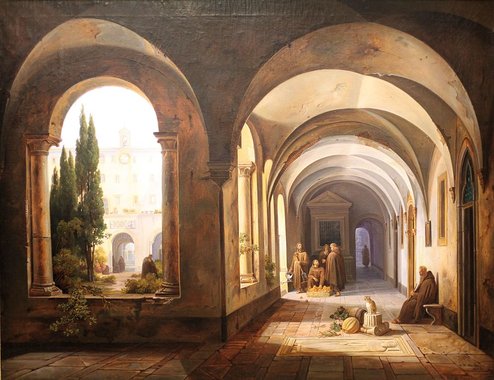Reconstructing the Light of the Past: Sara Matoti’s Research on the Betanit Heliodon

How can knowledge of the solar path provide new insights into historic heritage spaces?
Is it possible to reconstruct the light of the past to understand how monks lived, observed, and measured the world around them?
These are some of the questions at the heart of the research conducted by Sara Matoti, architect and PhD candidate in the National PhD Program in Heritage Science at Sapienza University of Rome, who carries out her work at the University of Parma in collaboration with Betanit.
After co-authoring, together with Barbara Gherri and Lisa Rovetta, the article Gli spazi aperti della vita monastica: valorizzazione e recupero microclimatico per la città del futuro (published in Ingenio), and other studies focusing on cloisters as strategic spaces for reuse and thermal mitigation, Matoti continues her exploration of the relationship between architecture, light, climate, and community.
While previous publications focused on cloisters as devices of thermal and social resilience for the contemporary city, the current research takes a further step: it moves toward the experimental reconstruction of the light of the past.
From History to Laboratory
Through collaboration with Prof. Barbara Gherri (University of Parma) and Prof. Chiara Bertolin (Norwegian University of Science and Technology), the project interlaces architectural heritage with early forms of scientific observation, linking the history of monastic spaces with practices of recording natural phenomena in past centuries.
By studying historical sources and architectural characteristics, the research aims to understand how certain environments – designed for communal life and contemplation – could also support systematic observation of climate and atmospheric events.
Cloisters as Observation Devices
Cloisters, due to their particular configuration, represent an emblematic case: protected yet open spaces, capable of offering stable and repeatable conditions for observing atmospheric phenomena.
The regulated rhythm of monastic life, carried out in the same sheltered place, created a favorable context for such observations.
These conditions made cloisters ideal not only for religious and communal purposes but also for long-term, repeatable observation practices.
The Heliodon as a Time Machine
A central aspect of the research employs experimental reconstructions and solar path simulations to explore how architectural orientation and exposure to light might have influenced these early observations.
The heliodon—a device that reproduces the apparent position of the Sun on architectural models or in a lab—can become a true time machine, allowing researchers to re-experience historical light conditions and test hypotheses regarding observational practices, ritual calendars, and climatic measurements performed by monastic communities.
Collaboration and Future Perspectives
The collaboration between Sara Matoti, Prof. Chiara Bertolin, Prof. Barbara Gherri, and Betanit aims to combine historical research and technology through:
- archival analysis;
- architectural surveys;
- solar simulations;
- laboratory experimentation.
The goal is to provide new interpretations of historic spaces, to understand past practices of living and observing, and to create tools for heritage enhancement that consider the interplay between light, climate, and community.
This research opens new perspectives for a deeper understanding of the relationship between architecture and science in the past and offers valuable insights for conservation and reuse practices sensitive to the luminous and microclimatic features of historic spaces.
Sara Matoti – Architect and PhD candidate in the National PhD Program in Heritage Science at Sapienza University of Rome. She conducts her research at the University of Parma in collaboration with Betanit, focusing on the relationship between historic architecture, natural light, and the climatic resilience of monastic spaces.
Prof. Barbara Gherri – Full Professor of Architectural Technology at the University of Parma. Her research deals with the rehabilitation of the built heritage, environmental sustainability, and microclimatic comfort, with extensive publications and applied studies on the restoration of historic buildings.
Prof. Chiara Bertolin – Professor at the Norwegian University of Science and Technology (NTNU) in Trondheim. Expert in Conservation Science and Building Physics, her research explores how climate and environmental variations affect the conservation of cultural and architectural heritage.
Media
Contact
betanit.com
Phone: +39 0523 650217
email: info@betanit.com
 Jodocus Sebastiaan Van den Abeele, Monaci francescani nel chiostro di Santa Maria in Ara Coeli, 1842, olio su tela, Musée départemental de l’Oise, Beauvais
Jodocus Sebastiaan Van den Abeele, Monaci francescani nel chiostro di Santa Maria in Ara Coeli, 1842, olio su tela, Musée départemental de l’Oise, Beauvais